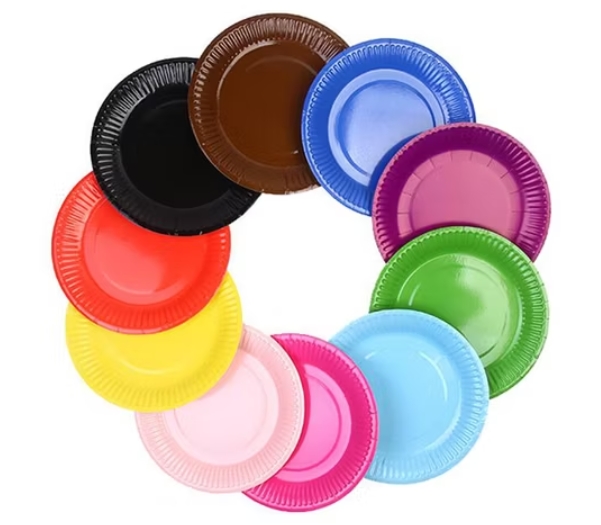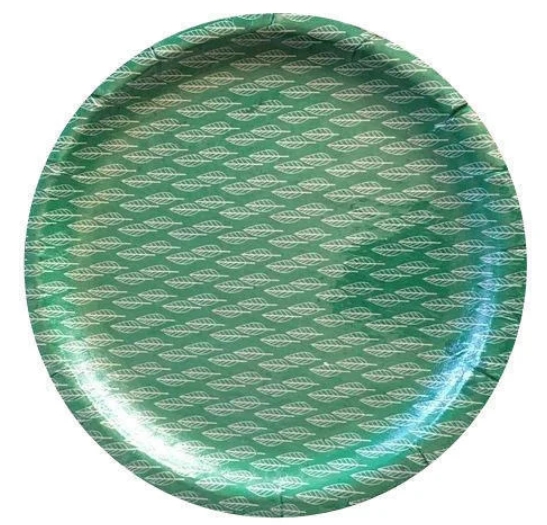
Content Menu
● What Are Plate Disposable Films?
>> Common Materials Used
● Environmental Impact of Plate Disposable Films
>> Production and Resource Use
>> Decomposition and End-of-Life
>> Waste Generation
>> Recycling Challenges
● Comparing Plate Disposable Films: Types and Sustainability
● Life Cycle Assessment: Paper vs Plastic vs Bioplastics
● Advantages of Environmentally Friendly Plate Disposable Films
● Disadvantages and Limitations
● Consumer Choices and Best Practices
>> How to Choose Environmentally Friendly Plate Disposable Films
>> Reducing Environmental Impact
● The Future of Plate Disposable Films
● Conclusion
● Frequently Asked Questions (FAQ)
>> 1. What are the most eco-friendly materials for plate disposable films?
>> 2. Can all plate disposable films be composted at home?
>> 3. Are paper plates with plastic coatings environmentally friendly?
>> 4. How do plate disposable films compare to reusable plates in terms of environmental impact?
>> 5. What should consumers look for when buying plate disposable films?
● Citations:
Disposable tableware, including plate disposable films, has become a staple in modern life due to its convenience, especially for events, takeaways, and outdoor dining. However, as environmental awareness grows, questions about the sustainability and ecological impact of these single-use products are increasingly relevant. This article explores the environmental friendliness of plate disposable films, comparing their materials, lifecycle, and alternatives, and offers guidance for consumers seeking greener choices.

What Are Plate Disposable Films?
Plate disposable films refer to thin layers of material—often plastic, paper, or bioplastics—used to coat or form disposable plates. These films serve to enhance durability, prevent leakage, and maintain food hygiene. They may be applied to paper plates to make them water- and grease-resistant or used as standalone films for wrapping or serving food.
Common Materials Used
- Plastic (Polyethylene, Polystyrene, PET)
- Paper with Plastic or Wax Coating
- Biodegradable Bioplastics (PLA, PHA)
- Compostable Plant-Based Films
Each material offers different properties regarding strength, water resistance, and environmental impact.
Environmental Impact of Plate Disposable Films
Production and Resource Use
The production of plate disposable films, especially those made from traditional plastics, relies heavily on fossil fuels, contributing to greenhouse gas emissions and resource depletion[3][4]. Paper-based films, while derived from renewable resources, still involve significant water and energy consumption during manufacturing[4].
Decomposition and End-of-Life
- Plastic Films: Traditional plastic films can take hundreds of years to break down in landfills, releasing microplastics into the environment and posing risks to wildlife[3][4].
- Paper Films: Paper decomposes more quickly but, when coated with plastic, the film's biodegradability is compromised.
- Biodegradable/Compostable Films: These films, made from plant-based materials like cornstarch or sugarcane, are designed to break down in composting environments within a few months. However, they often require industrial composting facilities to decompose efficiently and may not break down properly in home compost or landfill conditions[1][3].
Waste Generation
Globally, over 126 billion disposable plates are produced annually, generating vast amounts of waste[3]. Plate disposable films contribute to landfill overload, especially when not properly sorted or composted.
Recycling Challenges
Many plate disposable films are not recyclable due to mixed materials (e.g., plastic-coated paper), contamination with food, or lack of appropriate recycling infrastructure. This further complicates their environmental impact.
Comparing Plate Disposable Films: Types and Sustainability
| Type of Plate Disposable Film | Material Source | Biodegradability | Compostability | Recyclability | Environmental Impact |
| Plastic (PE, PS, PET) | Fossil fuels | No | No | Limited | High (long-lasting waste, pollution) |
| Paper with Plastic Coating | Wood pulp + PE | No | No | Difficult | Moderate to High (limited recycling, landfill burden) |
| Bioplastic (PLA, PHA) | Plant-based | Yes (industrial) | Yes (industrial) | Limited | Lower (if composted properly) |
| Wax-Coated Paper | Wood pulp + Wax | Partially | Sometimes | Difficult | Moderate (depends on wax type) |
| Pure Paper | Wood pulp | Yes | Yes | Yes | Low (if uncoated) |
Life Cycle Assessment: Paper vs Plastic vs Bioplastics
A life cycle assessment (LCA) evaluates the total environmental impact of a product from raw material extraction to disposal.
- Plastic Films: Lowest production cost but highest long-term environmental cost due to persistence and pollution.
- Paper Films: Lower carbon footprint if sourced from sustainably managed forests, but energy-intensive production and limited recyclability if coated with plastic[2][4].
- Bioplastics: Lower greenhouse gas emissions and renewable sourcing, but only beneficial if composted in appropriate facilities[1][3].
Advantages of Environmentally Friendly Plate Disposable Films
- Reduced Carbon Footprint: Biodegradable and compostable films made from renewable resources emit fewer greenhouse gases during production and decomposition[1][2].
- Less Landfill Waste: Compostable films can be diverted from landfills, reducing overall waste volume[1].
- Non-Toxic Decomposition: Plant-based films break down into harmless substances, unlike plastics that can leach toxins[1][3].
- Resource Conservation: Using agricultural by-products (e.g., bagasse, wheat straw) for bioplastics supports circular economy principles[1].

Disadvantages and Limitations
- Higher Cost: Biodegradable and compostable films are generally more expensive to produce and purchase than conventional plastics[1][4].
- Composting Infrastructure: Many compostable films require industrial composting facilities, which are not universally available[1][3].
- Performance Limitations: Some eco-friendly films may be less durable or water-resistant than plastic alternatives.
- Contamination Issues: Mixing compostable and non-compostable films can contaminate recycling and composting streams.
Consumer Choices and Best Practices
How to Choose Environmentally Friendly Plate Disposable Films
- Check Material Labels: Look for certifications such as “compostable,” “biodegradable,” or “made from renewable resources.”
- Prefer Uncoated or Pure Plant-Based Films: These decompose more easily and are less likely to cause environmental harm[3][4].
- Support Brands with Transparent Sourcing: Companies that use sustainably harvested materials and disclose their environmental practices are preferable[3].
- Dispose Properly: Compost compostable films where facilities exist; otherwise, minimize use and seek reusable alternatives.
Reducing Environmental Impact
- Reuse When Possible: Opt for reusable plates and films for regular use.
- Compost at Home or in Community Facilities: If using compostable films, ensure they are processed in suitable composting systems.
- Educate Others: Spread awareness about the importance of proper disposal and the benefits of eco-friendly alternatives.
The Future of Plate Disposable Films
Innovations in material science are driving the development of more sustainable plate disposable films, such as:
- Edible Films: Made from food-grade ingredients, these films can be consumed along with the food.
- Advanced Bioplastics: New biopolymers that decompose in a wider range of environments.
- Recycled Content Films: Increasing use of post-consumer recycled materials to reduce virgin resource use.
Government regulations and consumer demand are also pushing manufacturers to adopt greener practices and phase out single-use plastics in favor of compostable or recyclable alternatives.
Conclusion
Plate disposable films play a significant role in modern food service, but their environmental impact varies widely depending on material, production methods, and end-of-life management. While traditional plastic films are convenient, they pose serious environmental threats due to their persistence and pollution potential. Biodegradable and compostable plate disposable films offer a more sustainable solution, particularly when supported by proper composting infrastructure and responsible consumer behavior.
Ultimately, the most environmentally friendly approach is to minimize single-use products, choose materials with lower ecological footprints, and ensure correct disposal. As technology and infrastructure improve, plate disposable films are likely to become greener, but conscious consumer choices remain crucial for reducing their environmental impact.

Frequently Asked Questions (FAQ)
1. What are the most eco-friendly materials for plate disposable films?
The most eco-friendly materials are plant-based bioplastics (such as PLA or PHA), uncoated paper, and agricultural by-products like bagasse or wheat straw. These materials are renewable, biodegradable, and, when composted properly, leave minimal environmental residue[1][3][4].
2. Can all plate disposable films be composted at home?
No, not all plate disposable films are suitable for home composting. Many compostable films require the high temperatures and controlled conditions of industrial composting facilities to break down efficiently. Always check the manufacturer's instructions and local composting capabilities before disposal[1][3].
3. Are paper plates with plastic coatings environmentally friendly?
Paper plates with plastic coatings are less environmentally friendly than pure paper or compostable alternatives. The plastic layer impedes biodegradation and recycling, leading to increased landfill waste and environmental pollution[4].
4. How do plate disposable films compare to reusable plates in terms of environmental impact?
Reusable plates have a lower environmental impact over their lifespan, especially when used frequently and washed efficiently. Plate disposable films, even eco-friendly ones, are best reserved for situations where reusables are impractical, such as large events or outdoor settings[4].
5. What should consumers look for when buying plate disposable films?
Consumers should look for certifications like “compostable” (e.g., ASTM D6400, EN 13432), “biodegradable,” or “made from renewable resources.” It's also important to consider end-of-life options—choose products that can be composted or recycled locally, and avoid those with mixed or unclear materials[1][3][4].
Citations:
[1] https://www.linkedin.com/pulse/biodegradable-disposable-plates-why-make-switch-eco-clicky
[2] https://www.sciencedirect.com/science/article/pii/S2352550920305777
[3] https://customizepacking.com/what-are-the-most-environmentally-friendly-disposable-plates/
[4] https://ambican.com/comparing-materials-which-paper-plates-are-most-sustainable/
[5] https://www.mdpi.com/2071-1050/17/4/1434
[6] https://folenepackaging.com/by-industry/disposables-packaging/
[7] https://www.zhongxinpacking.com/the-environmental-benefits-and-applications-of-coating-technology-in-disposable-sugarcane-bagasse-tableware/

















